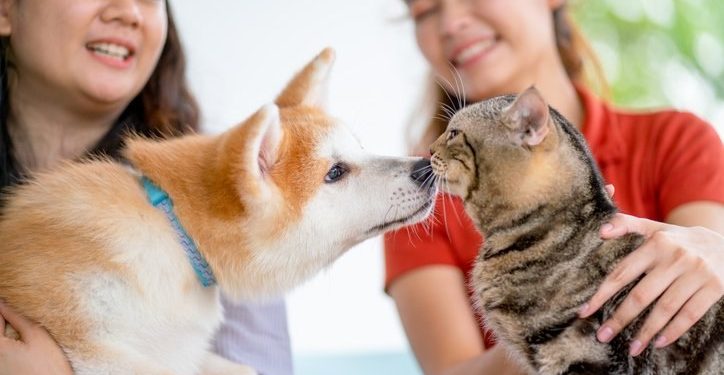Training your companion pet is an essential part of responsible pet ownership. Whether you have a dog, cat, or other small animal, proper training can help ensure a harmonious relationship and a well-behaved pet. This comprehensive guide covers the fundamentals of companion pet training, offering techniques, tips, and insights to help you build a lifelong bond with your furry friend.
Why Train Your Companion Pet?
Training your pet provides numerous benefits, including:
- Better Behavior: Training helps curb unwanted behaviors such as chewing, barking, and aggression.
- Safety: A well-trained pet is less likely to engage in dangerous activities or put themselves at risk.
- Strengthened Bond: Training sessions enhance communication and understanding between you and your pet.
- Mental Stimulation: Training provides mental challenges that keep your pet engaged and happy.
The Basics of Companion Pet Training
Start Early
Early training is crucial, especially for dogs and cats. Puppies and kittens are more adaptable and can learn new behaviors quickly. However, it’s never too late to start training an older pet.
Use Positive Reinforcement
Positive reinforcement is one of the most effective training methods. This involves rewarding your pet for desired behaviors with treats, praise, or playtime. Positive reinforcement encourages your pet to repeat good behavior.
Be Consistent
Consistency is key in training. Use the same commands and rewards each time to avoid confusing your pet. Ensure all family members are on the same page to maintain uniformity.
Keep Sessions Short and Fun
Short, frequent training sessions (10-15 minutes) are more effective than long, infrequent ones. End each session on a positive note to keep your pet motivated and eager to learn.
Training Techniques for Different Pets
Dogs
Training a dog requires patience, consistency, and positive reinforcement. Here are some essential commands and techniques:
- Sit: Hold a treat close to your dog’s nose, then move your hand up, causing their head to follow and their bottom to lower. Once they’re in a sitting position, say “sit,” give them the treat, and praise them.
- Stay: Ask your dog to sit, then open your palm in front of you and say “stay.” Take a few steps back. If they stay, reward them with a treat and praise. Gradually increase the distance and duration.
- Come: Put a leash on your dog and gently pull them towards you while saying “come.” Reward them with a treat and praise when they reach you. Practice in a safe, enclosed area before trying off-leash.
- Leave It: Place a treat in both hands. Show your dog one closed fist with the treat inside and say “leave it.” Ignore any attempts to get the treat. When they stop trying, give them the treat from the other hand.
Cats
While cats are often seen as independent, they can also benefit from training. Focus on positive reinforcement and patience:
- Litter Training: Place your cat in the litter box after meals and naps. Reward them with treats and praise when they use it. Keep the box clean to encourage regular use.
- Come When Called: Use treats or toys to encourage your cat to come to you. Call their name and reward them when they respond. Repeat frequently to reinforce the behavior.
- High Five: Hold a treat just above your cat’s paw. When they reach for it, say “high five” and give them the treat. Practice regularly to reinforce the trick.
- No Scratching: Provide scratching posts and reward your cat for using them. Discourage scratching on furniture by using deterrents like double-sided tape or sprays.
Small Animals
Training small animals like rabbits, guinea pigs, and hamsters requires gentle handling and patience:
- Litter Training: Place a litter box in the corner of their enclosure where they usually eliminate. Reward them with treats when they use it.
- Hand-Feeding: Hand-feed your small pet to build trust and encourage them to come to you. Use their favorite treats to reinforce positive behavior.
- Clicker Training: Use a clicker to mark desired behaviors, followed by a treat. Clicker training can be effective for teaching tricks and commands.
Common Training Challenges
Fear and Anxiety
Some pets may be fearful or anxious, making training more challenging. Use gentle, gradual techniques to build their confidence. Avoid punishment, as it can exacerbate fear.
Distractions
Train your pet in a quiet, distraction-free environment. Gradually introduce distractions as they become more proficient in their commands.
Stubbornness
If your pet is stubborn, try varying your rewards to keep them motivated. Use high-value treats or toys that they find irresistible.
Advanced Training Techniques
Once your pet has mastered basic commands, you can introduce more advanced training:
Agility Training (Dogs)
Agility training involves teaching your dog to navigate an obstacle course. It provides physical exercise and mental stimulation. Start with basic obstacles like jumps and tunnels, gradually increasing the complexity.
Leash Training (Cats)
Leash training allows your cat to explore the outdoors safely. Start by getting them comfortable with a harness indoors. Gradually introduce the leash, rewarding them for calm behavior.
Trick Training (Small Animals)
Teach your small pet fun tricks like spinning, jumping through hoops, or pushing a ball. Use clicker training and treats to reinforce these behaviors.
Maintaining Training Success
Training is an ongoing process. To maintain your pet’s good behavior:
- Practice Regularly: Continue to practice commands and tricks to reinforce your pet’s training.
- Stay Positive: Use positive reinforcement and keep training sessions enjoyable.
- Adapt to Changes: Be prepared to adjust your training techniques as your pet ages or as new behaviors emerge.
Conclusion
Companion pet training is a rewarding journey that enhances the bond between you and your pet. By using positive reinforcement, being consistent, and practicing patience, you can teach your pet essential commands and tricks that ensure their safety and well-being. Remember, training is not just about discipline but also about building trust and understanding with your furry friend. Enjoy the process and celebrate each milestone as you create a harmonious and happy life together.
4o



